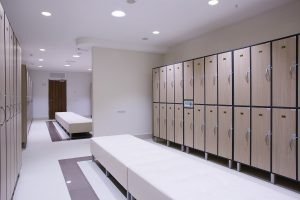Bathroom partitions are a must—and even a given—for public places, such as schools. They offer privacy and potentially limit the spread of contamination. In other words, they are more hygienic than those without. Even better, these facilities now have various options when it comes to design, size, and color.
Differences in Sizes
A bathroom partition can cover at least three-fourths of the space. This can leave a gap at the bottom to allow the other persons to see if someone is using it. This will also provide more legroom to the user, who might have to move around while doing their business.
There are also partitions that go all the way to the floor. This way, others cannot see the user’s feet. This provides more privacy at the same time. The problem it can make some people feel claustrophobic. It might not be the best choice for bathrooms intended for students, especially children. They can easily hide in these places, and it can take a while before adults can find them.
Differences in Materials
Most of the partitions vary according to the material. These can include the following:
Stainless Steel—This is the most durable of all the options. They can last for years and can withstand high-traffic areas such as offices and schools. Maintenance is also easy.
The downside is they can cost a lot of money, and many schools have tight budgets for bathroom installation and improvement. They can also generate some noise, which can potentially disturb classes.
Metal—This is the most popular option because they are cheap and versatile when it comes to design. Usually, it involves using steel as a powder coat for a honeycomb board. The board makes the entire partition affordable while the coat gives it durability and strength.
The surface is also easy to work with, which makes it convenient to paint on in various colors. That’s why they’re one of the best partitions for bathrooms used by children.
Laminates—These can be more expensive than a powder-coated steel partition, but they can still be more affordable than stainless steel. They are excellent in areas with high traffic such as schools. They don’t undergo corrosion or suffer from dents. They are also easy to clean while dirt and grime usually don’t penetrate the surface.
One of the downsides is they can succumb to high moisture. For this reason, they’re not the best material for spaces with showers. Schools can still use them for regular bathrooms with only sinks or vanities.
Differences in Colours

The evidence pointing to the effectiveness of color psychology is limited, but multiple studies also show that hues can have an impact, especially for children. Colors, for example, can be associated with learning about the world. They might be able to tell the difference between ripe and young banana based on their color. They can tell whether it’s going to rain by looking at the shades of the clouds or the skies.
Bright colors appeal to children, especially the young ones. These allow them to differentiate the objects they can see. For younger kids, bright colors somehow enhance their vision.
What partitions work best for your school’s bathroom? It depends on many factors, including the users, size, and budget. Regardless, rest assured, you have many choices.

